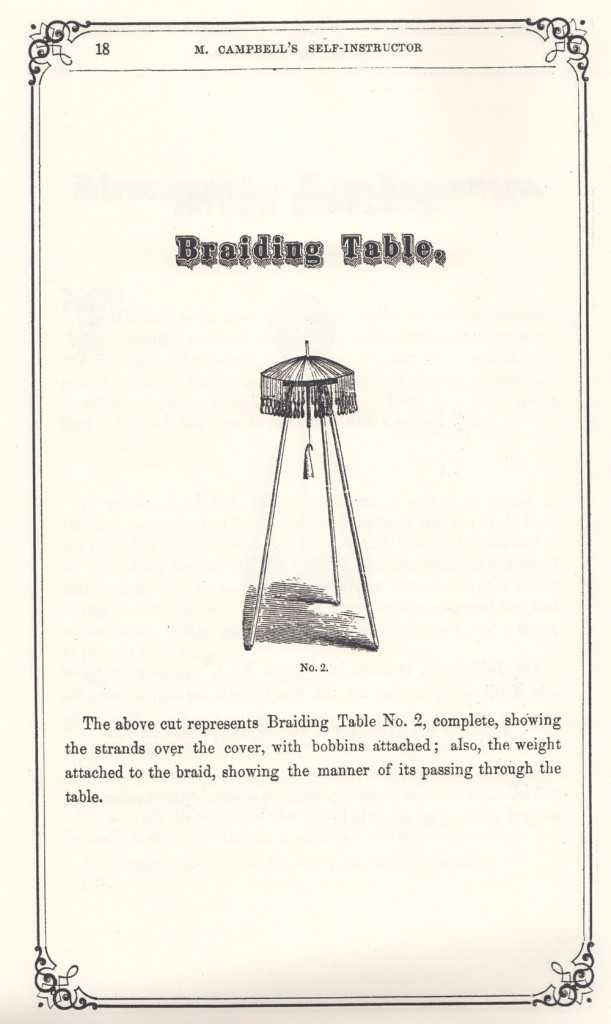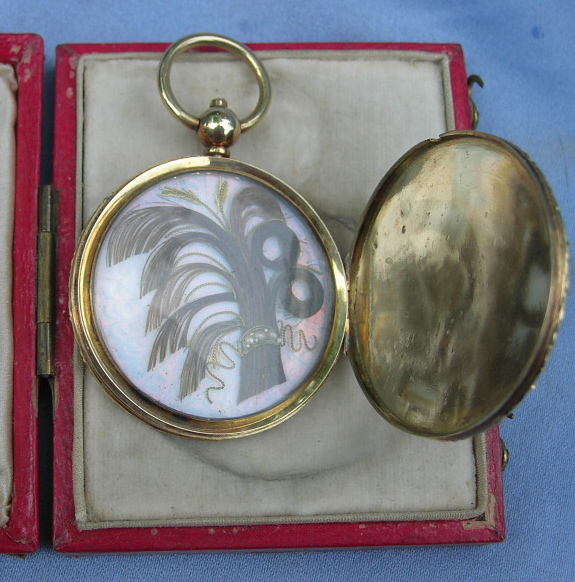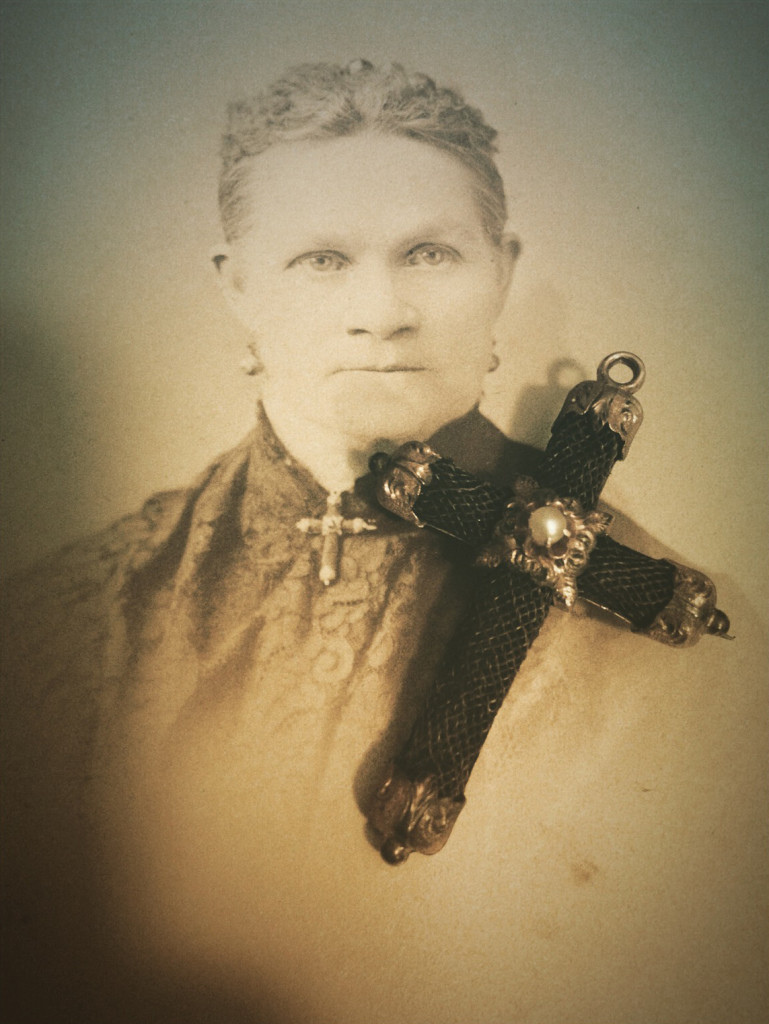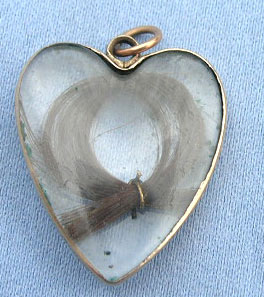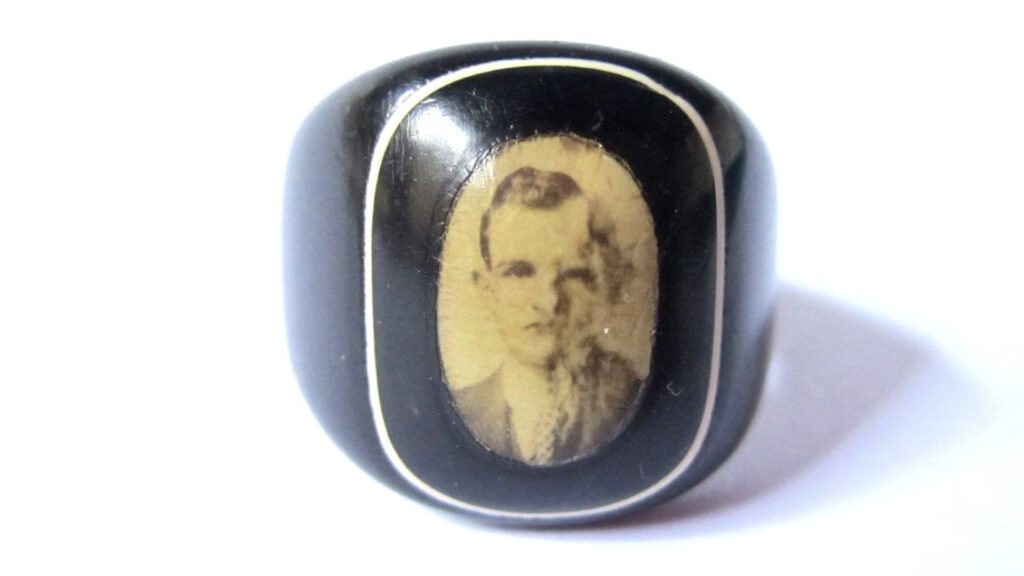Hairwork, An Introduction
Often, the question is asked ‘how do I find more out about hairwork jewellery?’ Hair is one of the most basic and important materials used in sentimental and memorials jewels. Its regrowth means that it is renewable and its giving means that it is intrinsically personal. The gift of a person’s hair is the offering of the body and that is singular and completely unique. Throughout the 19th century, this had become popularised to the extent that it was the primary form of sentimental gift giving in jewellery. Seen in lockets, rings, brooches, bracelets, earrings, stickpins and artwork, this was a material that was beautiful and respected.
An industry grew around the very nature of its sentimentality. Families were fed and sheltered, as artisans could employ people to work as weavers, allowing for female integration into an industry that had previously been male dominated.
To simply consider hair a trivial item that was cut and placed into a jewel would not do justice to the craftspeople who forged their profession on the elaborate art of hairworking. Featuring the following articles, you can experience the level of quality and sentimentality that the 17th, 18th and 19th centuries had to offer as the industry and quality developed.
Link > Art of Hairwork 1: Victorian Hairwork Fob Chain With Serpent Clasp
The Art of Hairwork series used Mark Campbell’s ‘Self-Instructor in the Art of Hair Work’ (1867), as well as contemporary catalogues to feature the creation of hairwork jewels and chains. Chains were every-day accessories of the 19th century, holding everything from watches to pencils. Hair was prodigiously used as a material for chains and many examples still exist today for low cost. By identifying these chains used in daily life, much can be seen from hair and its importance.
Link > Art of Hairwork 2: Directions for New Beginners
If you are interested in weaving hair, this article shows the basic techniques for weaving hair and creating basic designs.
Link > Art of Hairwork 3: Victorian Hairwork Fob Chain With Locket
A basic locket held a token of affection for a loved one on a hair chain and this article looks at how the different styles of daily accessories on chains denote their age and the primary art styles of the time. Accessories may be worn for a lifetime, but their style isolates the identity of when they were created.
Link > Art of Hairwork 4: Victorian Hairwork Fob Chain With Acorn Charms
The little symbols in designs of fob chains denote their usage in daily life. Just with the accessories, the sentiments of a symbol must be recognised by a viewer and trigger an idea of identity. The acorn was one of the more popular 19th century symbols and this shows the charm in use.
Link > Art of Hairwork 5: Victorian Hairwork Fob Chain With Black Enamel Fittings
Of course, black enamel is the most popular material that denotes death in jewels. The chain used as an example in this article identifies standard pricing of hair chains and shows examples of 19th century black enamel from contemporary jewels.
Link > Initial Hairwork Cufflinks in Silver
Accessories with hair weren’t relegated to the chain, but in the example of cufflinks, hair was utilised in many ways across several kinds of jewels. In these and the below article on shoe buckles, hair was woven and used in popular fashions since the 1600s.
Link > Mourning Shoe Buckles and Fashion
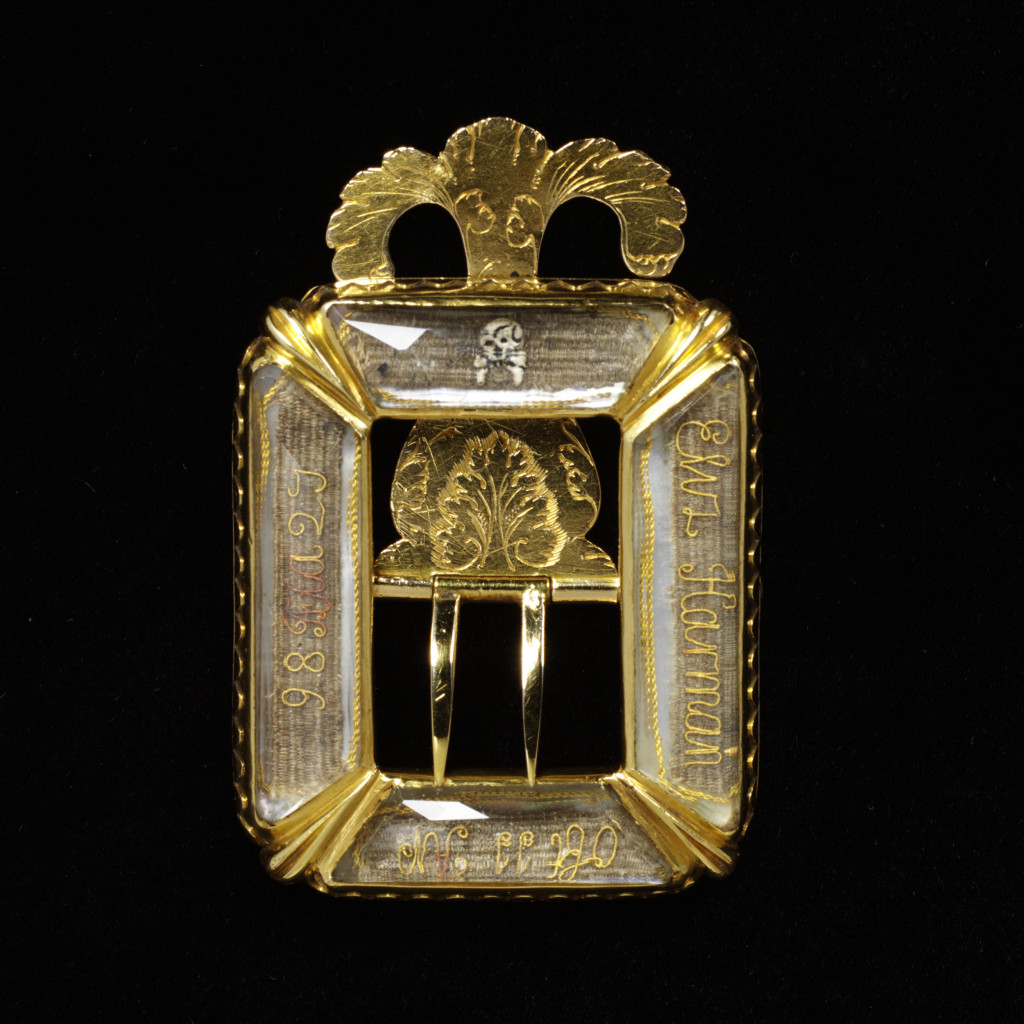
This mourning buckle contains panels of woven hair, decorated with an elaborate inscription in gold thread and a small enamelled skull, all set behind rock crystal. The inscription, partly in latin, tells us that the piece commemorates Elizabeth Harman who died on 11 April 1698, aged 27.
The extent of quality seen in these shoe buckles exemplifies the other end of the spectrum in just how important hair was in quality jewels. To the level of royalty, hair was carefully woven and placed in the finest jewels, seen in higher regard than any precious jewel.
Link > Family Hairwork Locket, c.1830
Families are often captured in hair jewels, with various coloured hairs woven together and marking a moment in time. In an 1830s locket, the entire family is catalogued with the original documentation. Having something to connect the hair back to the person it belonged to is not a luxury that the modern collector has. Often once the wearer, or the family, has passed on, so have the records of the memories. This locket shows how the designer captured the jewel in time.
Link > One Family in a 19th Century Hairwork Bracelet
Bracelets are often the simplest way a family could provide a keepsake of time. Their larger size during the mid 19th century matched the larger crinoline in fashion and was a light enough material to be worn prominently. In this bracelet, several members of the family are captured in 1858.
Link > Swiss Hairwork Locket, Mid 19th Century
Culturally, hairwork crosses time and geographical/political borders. Being used in jewellery since pre-history, it was not relegated simply to the mourning/sentimental industry. This mid 19th century locket from Switzerland shows how the hair was applied, but from the perspective of a non-British/American cultural focus.
Link > A Hairwork Crucifix and Primary Sources in Mourning
Primary sources, as seen in the 1830s locket, are rare and precious. These windows into time are important, and in this crucifix, there is a primary source of the photograph of the wearer. Photography in the 19th century grew faster and cheaper to produce, with smaller sizes that fit directly into the jewel. Having a photograph of the jewel in-situ brings back the emotional connection of the jewel for its time.
Link > French Neoclassical Sepia/Hair Mourning Ring
Crushed and painted onto ivory or vellum, hair was used in the Neoclassical era liberally. Sepia jewels featuring allegorical scenarios are iconic for the post c.1760s-1800 period and this ring shows the style and how the symbols of death were displayed.
Link > Georgian Heart with Hairwork Twist in Crystal, 1824
The ‘Georgian Heart’ was a developed symbol during the 18th century and is now locked as the heart we all understand today. In a more humble way of presenting hair, this pendant foregoes any hairworking craft and places the hair directly into the jewel. From this article, there are several other examples in articles showing the development of the heart and how hair integrated so well into a symbol of love.
Throughout all of these examples, one can find the level of growth the industry saw in hairworking. Beginning as a way to display affection within a jewel, to a professional industry of skilled artists/weavers who could create entire works of art from hair in jewels, hair is singularly important in the growth of the memorial and sentimental jewellery industry. It is personal, malleable, beautiful and immediately arresting material that deserves its respect in history. In all of these examples, one can see the cost of the hairworked jewels and just how much hair was imported into England throughout the 19th century, proving that there is no material which could not be exploited for artistic merit, or human conceit so emotional that didn’t want a piece of the person they loved.





